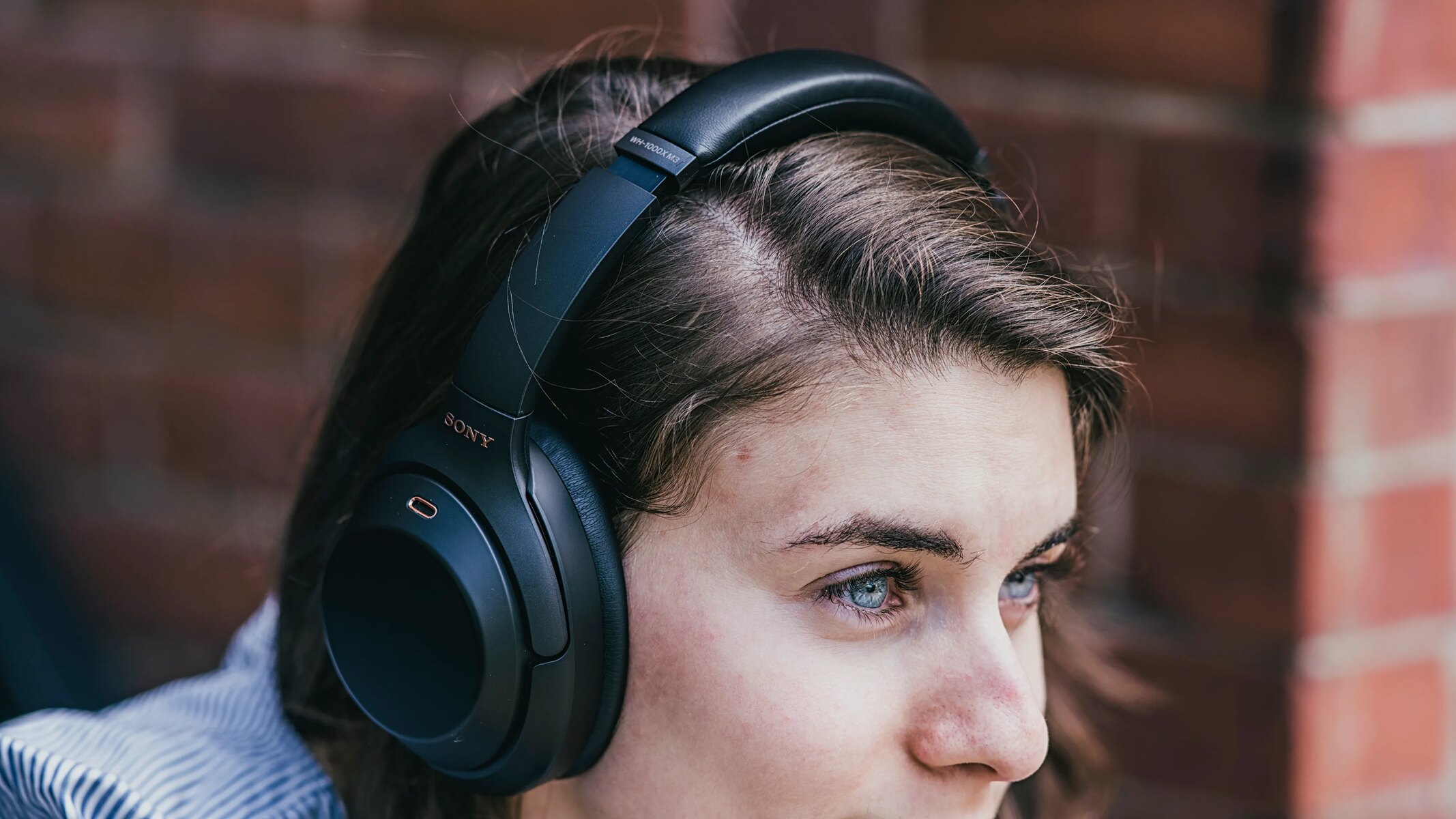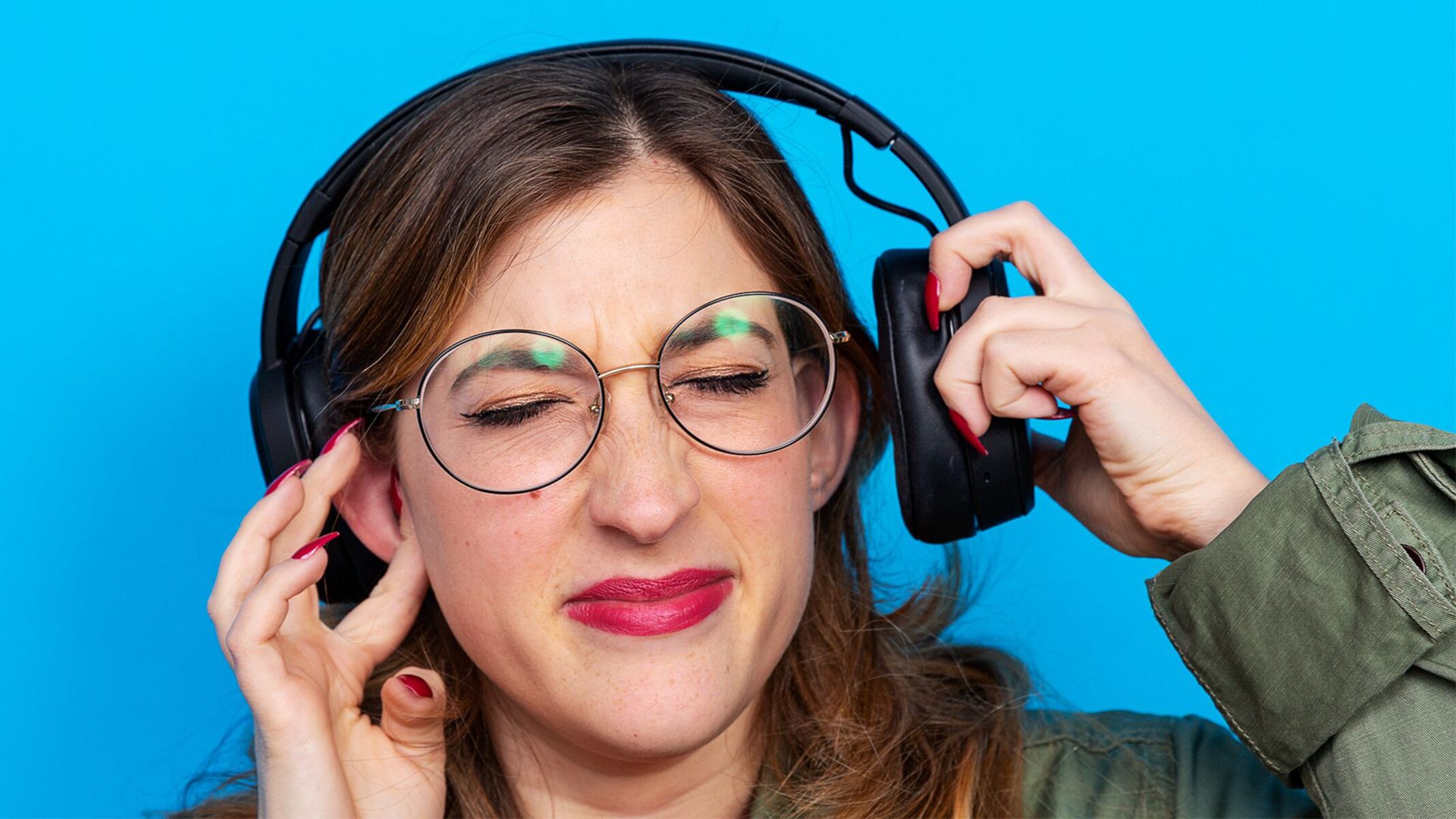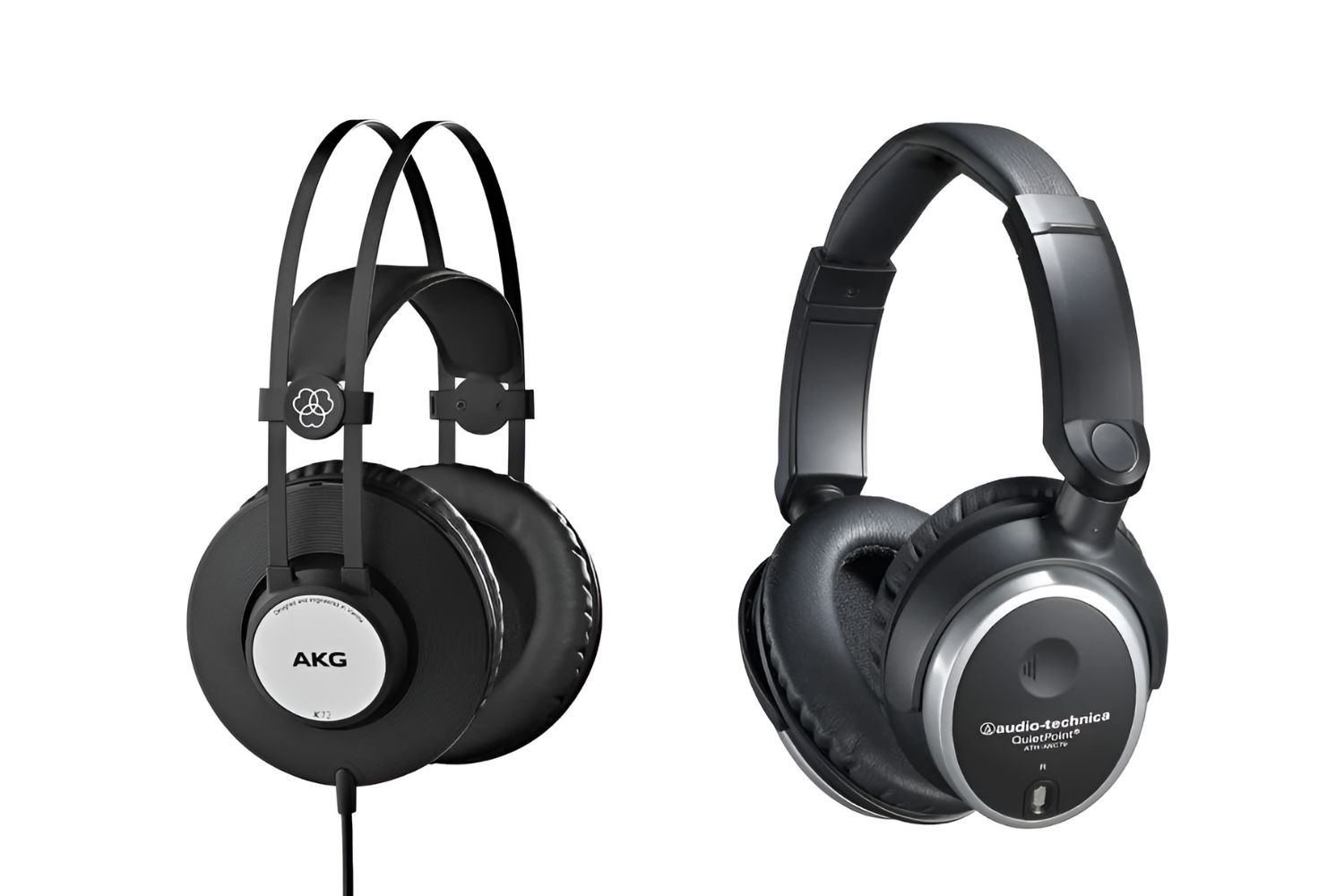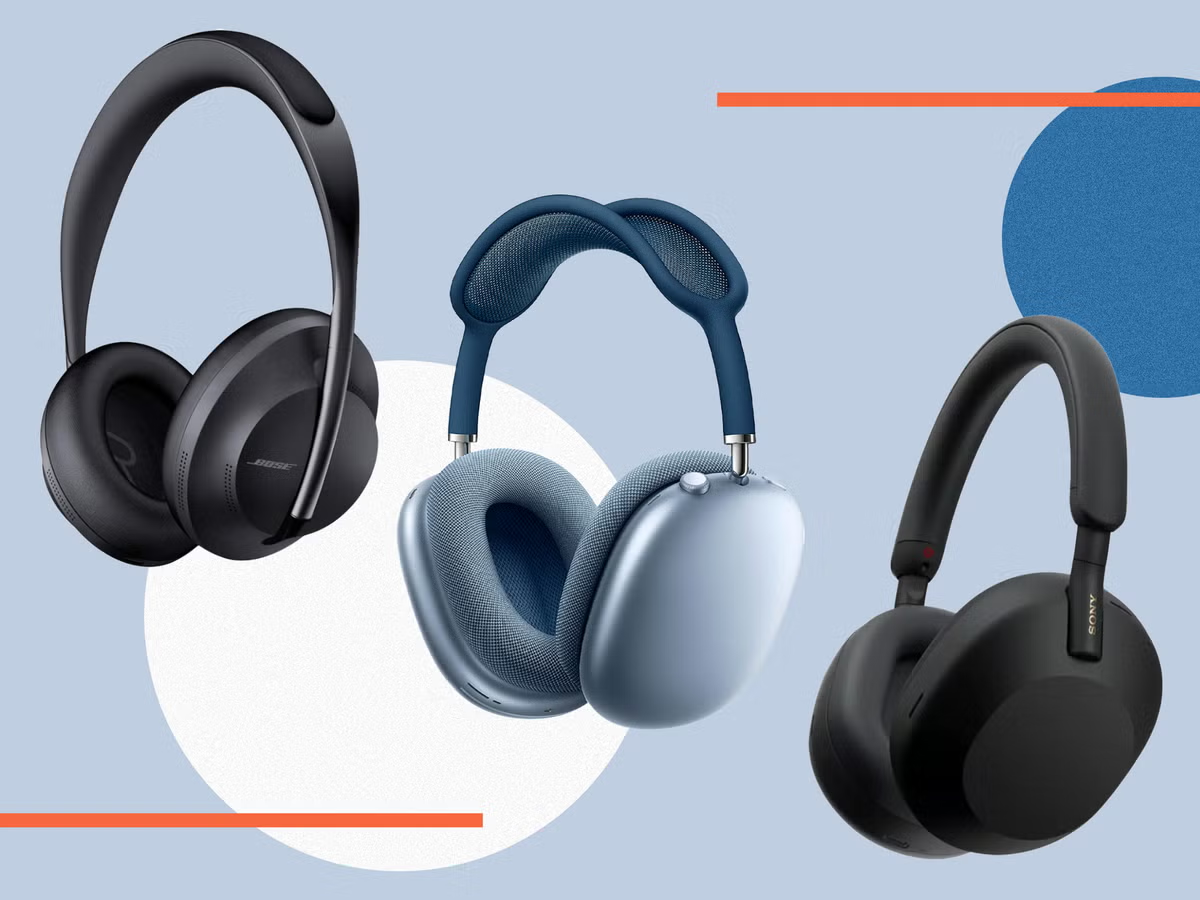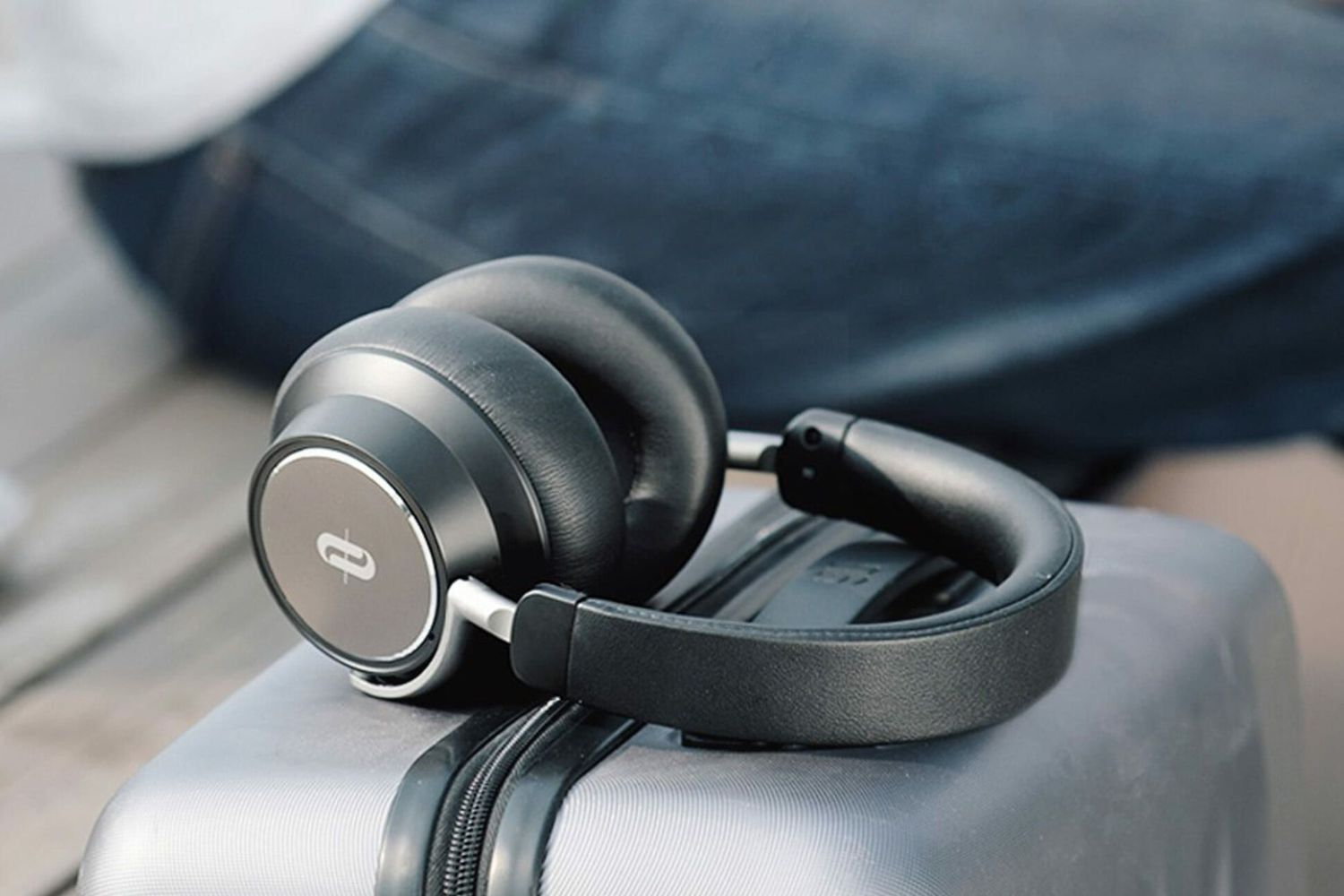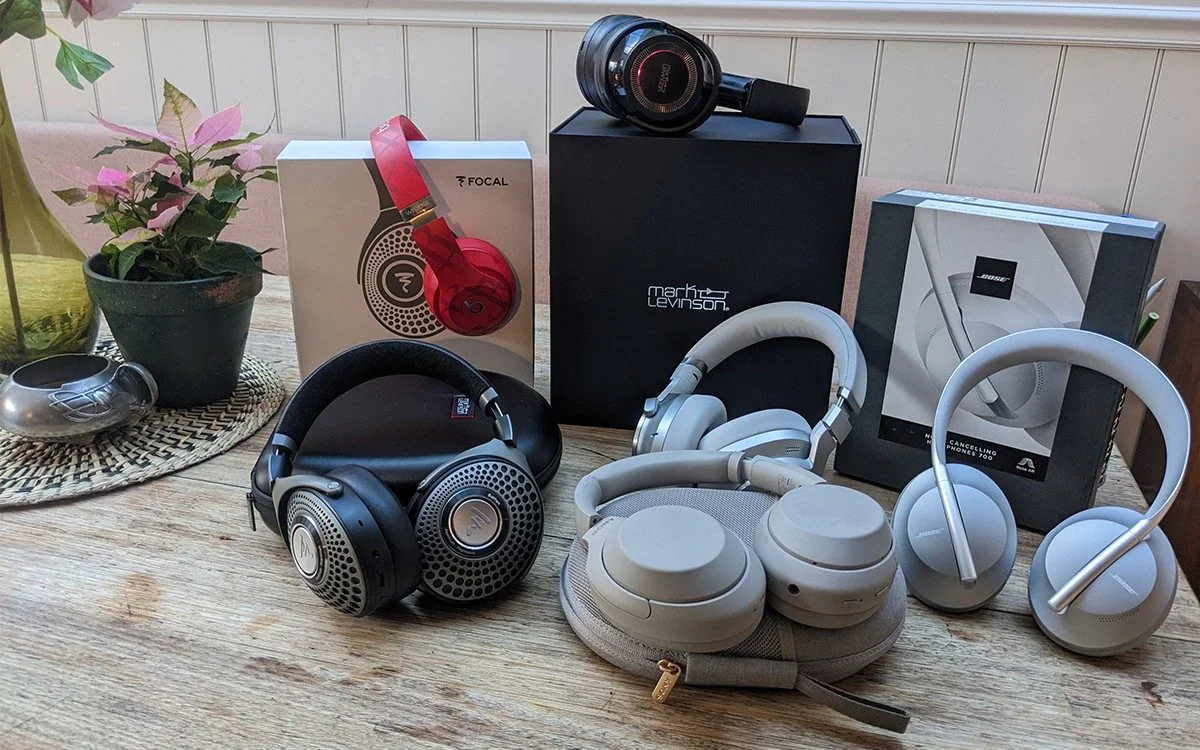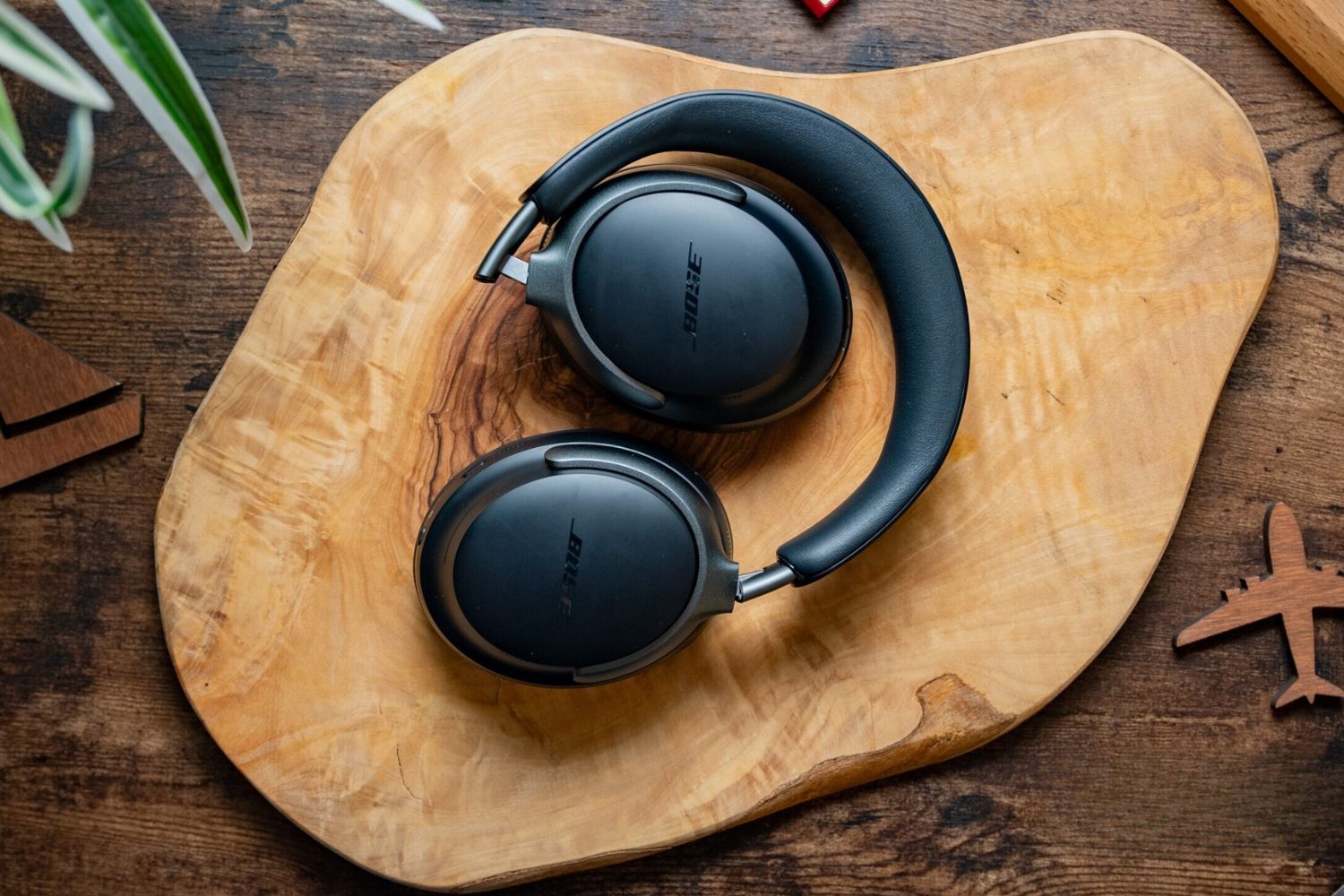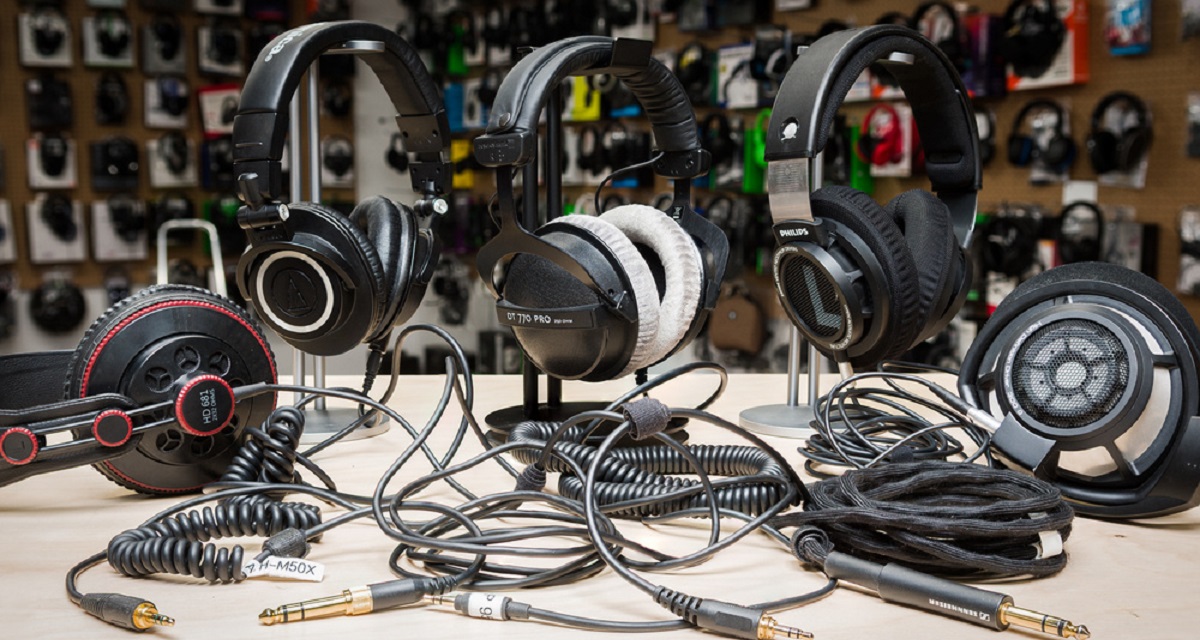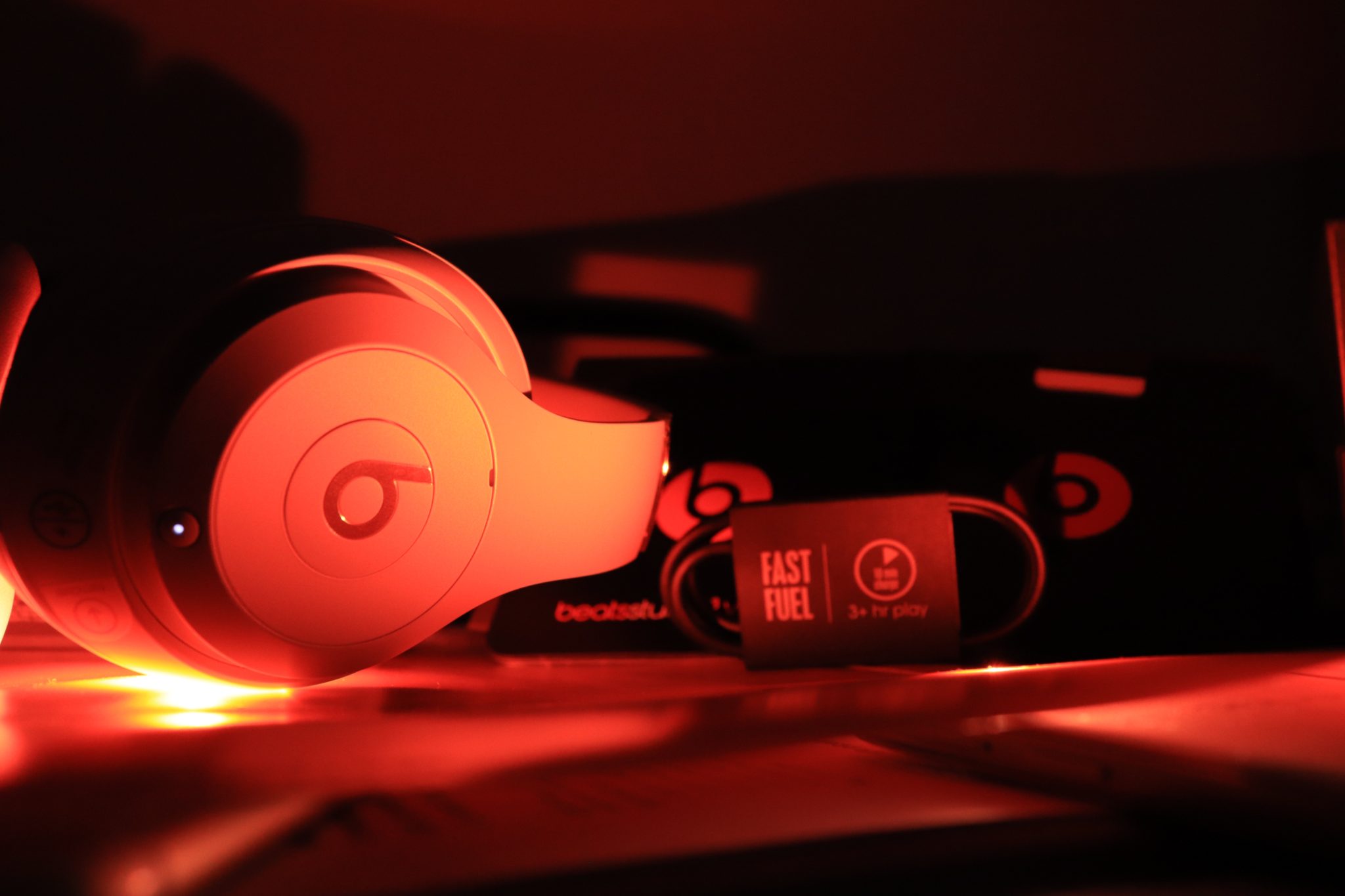Introduction
Noise cancelling headphones have revolutionized the way we listen to audio in noisy environments. Whether you’re on a crowded airplane, working in a bustling office, or trying to relax in a noisy coffee shop, these headphones can provide a sanctuary of peace and tranquility. But have you ever wondered how they work and whether they’re worth the investment?
Simply put, noise cancelling headphones are designed to reduce or eliminate unwanted external sounds, allowing you to focus on your audio without distractions. They accomplish this through advanced technology that analyzes and counteracts the incoming sound waves.
By understanding the intricacies of noise cancelling headphones, you can make an informed decision about whether they’re the right fit for you. In this article, we will delve into how these headphones work, the different types available, the benefits they offer, and important factors to consider when choosing the best pair for your needs.
So, if you’re tired of being interrupted by loud environments and want a more immersive audio experience, keep reading to discover the fascinating world of noise cancelling headphones.
How Do Noise Cancelling Headphones Work?
Noise cancelling headphones employ innovative technology to combat unwanted external sounds. They operate on the principle of destructive interference, which means they produce sound waves that are out of phase with the incoming noise. This creates a cancellation effect, reducing or eliminating the noise you hear.
These headphones consist of three main components: a microphone, a noise-cancelling circuitry, and a speaker driver. The microphone acts as the listener, detecting the ambient noise around you. The noise-cancelling circuitry then analyzes the frequencies of the incoming sounds and generates an opposite sound wave, referred to as the “anti-noise.” This anti-noise is played through the speaker driver, effectively neutralizing the external sounds.
Active noise cancelling (ANC) headphones use a built-in power source, usually a rechargeable battery, to power the noise cancellation technology. The microphone continuously monitors the ambient noise and feeds that information to the noise-cancelling circuitry. The circuitry generates the anti-noise and plays it through the speakers, helping to cancel out the unwanted sounds.
Passive noise cancelling headphones, on the other hand, rely on physical materials and design to block out noise. These headphones have well-insulated ear cups that create a physical barrier between your ears and the outside world. The materials used in the construction of these headphones absorb and block external sounds, providing a passive form of noise cancellation.
It is important to note that while noise cancelling headphones are highly effective in reducing continuous, low-frequency sounds like airplane engines or air conditioning units, they are not as effective when it comes to sudden, high-pitched noises or human voices. However, some advanced models now offer improved noise cancellation capabilities across a wider range of frequencies.
Now that you understand how noise cancelling headphones work, let’s explore the different types available and weigh their pros and cons.
Active vs. Passive Noise Cancelling
When it comes to noise cancelling headphones, there are two main types: active noise cancelling (ANC) and passive noise cancelling. Understanding the differences between these two types can help you choose the right headphones for your specific needs.
Active Noise Cancelling (ANC):
Active noise cancelling headphones utilize advanced technology to actively cancel out external sounds. They employ a built-in microphone that detects the ambient noise and then generates the opposite sound waves to cancel it out. The active cancellation process occurs in real-time, allowing you to enjoy a more immersive audio experience.
One of the key advantages of ANC headphones is their ability to effectively reduce low-frequency sounds like engine rumble and background hum. They excel in environments such as airplanes, trains, and busy city streets, where constant noise can be overwhelming. ANC headphones are also beneficial for office work, as they can help improve concentration and productivity by minimizing distractions.
It’s worth noting that active noise cancelling headphones require power to function, usually from a built-in rechargeable battery. This means you need to keep them charged to enjoy their noise cancelling capabilities. However, most models can still be used in passive mode when the battery is depleted.
Passive Noise Cancelling:
Passive noise cancelling headphones, also known as noise isolating headphones, do not rely on electronic circuitry to cancel out noise. Instead, they use physical materials and design features to block external sounds from reaching your ears. This includes thick cushioning, well-sealing ear cups, and noise-absorbing materials.
Passive noise cancelling headphones are effective at blocking out high-frequency sounds, such as conversations and background chatter. They work by physically blocking sound waves from entering your ears, creating a barrier that isolates you from the surrounding noise. These headphones are ideal for quiet environments, such as libraries or for enjoying music in a peaceful setting.
Unlike active noise cancelling headphones, passive noise cancelling models don’t require power to function. This makes them more convenient in situations where recharging the headphones may not be possible.
When deciding between active and passive noise cancelling, it’s essential to consider your specific needs and the environments where you will be using the headphones. If you frequently travel or work in noisy surroundings, active noise cancelling headphones may be the better choice. However, if you primarily use headphones in quieter environments or prefer a more affordable option, passive noise cancelling headphones can still offer significant noise reduction.
Now that we’ve explored the different noise cancelling technologies, let’s move on to discussing the benefits of using noise cancelling headphones.
Benefits of Noise Cancelling Headphones
Noise cancelling headphones provide several advantages that make them worth considering for anyone seeking a more immersive and enjoyable audio experience. Let’s explore some of the key benefits:
1. Enhanced Audio Experience: By canceling out background noise, noise cancelling headphones allow you to hear your audio more clearly and without distractions. Whether you’re listening to music, watching movies, or participating in video calls, the improved sound quality and clarity can enhance your overall enjoyment.
2. Improved Focus and Concentration: Noise cancelling headphones create a peaceful environment by reducing external noise. This can be highly beneficial for those who need to work, study, or read in noisy surroundings. By minimizing distractions, these headphones help improve focus and concentration, ultimately enhancing productivity and performance.
3. Reduced Stress and Fatigue: Constant exposure to loud or distracting noises can increase stress levels and mental fatigue. Noise cancelling headphones provide a refuge from the chaos, allowing you to relax and unwind in even the noisiest environments. This can be particularly beneficial during long flights, train rides, or commutes.
4. Protection of Hearing: Prolonged exposure to loud noises can be damaging to your hearing. Noise cancelling headphones can help mitigate this risk by reducing the need to raise the volume of your audio to drown out external sounds. By creating a quieter environment, they help preserve your hearing health in the long run.
5. Versatility and Adaptability: Noise cancelling headphones are versatile and can be used in a variety of settings. Whether you’re traveling, working, studying, or simply enjoying your favorite music, these headphones provide a personalized audio experience that adapts to your needs.
6. Potential Health Benefits: Excessive noise can contribute to stress, anxiety, and insomnia. By minimizing the impact of external noise, noise cancelling headphones have the potential to improve your overall well-being. They can help create a sense of calm and tranquility, promoting relaxation and better sleep quality.
7. Polite Communication: When wearing noise cancelling headphones, others around you may assume that you are engaged in an audio activity and are less likely to interrupt you. This can be particularly useful in busy public places, giving you the opportunity to enjoy some peace and quiet without being disturbed.
From enhancing your audio experience to improving focus and reducing stress, noise cancelling headphones offer a range of benefits for various situations. By investing in a high-quality pair, you can truly transform your listening experience and find solace in the midst of a noisy world.
The Different Types of Noise Cancelling Headphones
Noise cancelling headphones come in various types and styles, each with its own unique features and benefits. Understanding the differences between these types can help you make an informed decision when choosing the right pair for your specific needs. Let’s explore some of the most common types:
1. Over-ear Headphones: Over-ear noise cancelling headphones, also known as circumaural headphones, are designed to completely cover your ears. They provide excellent noise isolation thanks to their large ear cups that fully enclose your ears. Over-ear headphones offer a comfortable fit and are often chosen for their superior sound quality and immersive experience.
2. On-ear Headphones: On-ear noise cancelling headphones, also called supra-aural headphones, rest on your ears rather than covering them entirely. They are typically more compact and lightweight compared to over-ear headphones, making them a convenient option for travel. While they offer good noise isolation, they may not provide the same level of noise reduction as over-ear models.
3. In-ear Headphones: In-ear noise cancelling headphones, also known as earbuds or earphones, are small and fit directly into your ear canal. They are highly portable and come with various sizes of ear tips to ensure a secure and comfortable fit. In-ear headphones typically offer passive noise isolation, where the ear tips block out external sounds. Some models also come with active noise cancelling technology to further reduce surrounding noise.
4. Wireless Headphones: Wireless noise cancelling headphones provide the convenience of a wireless connection, allowing you to enjoy your audio without the restrictions of tangled wires. They use Bluetooth technology to connect to your devices, offering freedom of movement and eliminating the need for a physical connection. Wireless noise cancelling headphones are available in various styles, including over-ear, on-ear, and in-ear options.
5. True Wireless Earbuds: True wireless noise cancelling earbuds are a popular option for those who value portability and a cable-free experience. These earbuds do not have any wires connecting the earpieces, offering a truly wireless audio solution. They come with their own charging case, making them easy to carry and ensuring that they stay charged while on the go.
6. Bone Conduction Headphones: Bone conduction noise cancelling headphones are a unique type that bypasses the ear canal and transmits sound waves through vibrations in the bones of your skull. They leave your ears open, allowing you to hear ambient sounds while still enjoying your audio. These headphones are preferred by some outdoor enthusiasts who need to remain aware of their surroundings.
Each type of noise cancelling headphones has its own advantages and considerations. When choosing the right type for you, consider factors such as comfort, sound quality, portability, and your personal preferences. By exploring the different options available, you can select a pair of noise cancelling headphones that suits your needs and enhances your listening experience.
Factors to Consider When Choosing Noise Cancelling Headphones
When searching for the perfect pair of noise cancelling headphones, there are several important factors to consider. These factors will help you determine which headphones best suit your needs and preferences. Let’s take a closer look at what you should consider before making your purchase:
1. Noise Cancelling Performance: The primary feature to assess is the effectiveness of the noise cancelling technology. Look for headphones that offer advanced noise cancellation capabilities, particularly in the frequency range most relevant to your needs. Pay attention to user reviews and expert opinions to gauge the performance of the headphones in real-world scenarios.
2. Sound Quality: Noise cancelling capabilities should never compromise the audio quality. Look for headphones that deliver excellent sound reproduction, clear vocals, and a balanced audio profile. The best noise cancelling headphones should provide an immersive audio experience with a wide frequency response and minimal distortion.
3. Comfort and Fit: Since you’ll likely be wearing your noise cancelling headphones for extended periods, comfort is of utmost importance. Look for headphones with soft, cushioned ear cups and an adjustable headband that can accommodate different head sizes. Consider the weight of the headphones as well, opting for lighter models for enhanced comfort.
4. Battery Life and Charging: Active noise cancelling headphones rely on a built-in battery to power the noise cancelling technology. Consider the battery life offered by the headphones you’re considering, as well as the charging time. Look for models that provide sufficient battery life for your usage needs and offer convenient charging options such as fast charging or wireless charging capabilities.
5. Wireless Connectivity: If you prefer a tangle-free listening experience, wireless noise cancelling headphones are a great option. Ensure that the headphones support the latest Bluetooth standard for stable and seamless connectivity. Look for additional features like multi-device pairing and compatibility with voice assistants for added convenience.
6. Durability and Build Quality: Quality construction ensures that your headphones can withstand daily use and potential travel. Pay attention to the materials used, such as sturdy plastic or metal, and check for certifications like IPX water or sweat resistance if you plan to use the headphones during workouts or outdoor activities.
7. Price and Value for Money: Set a budget for your noise cancelling headphones and look for options that offer the best value. Consider the features, performance, and durability in relation to the price. While premium brands offer high-quality headphones, there are also budget-friendly options that provide satisfactory noise cancellation at a lower cost.
8. Extra Features and Accessories: Consider any additional features and accessories that may enhance your experience. This could include a carrying case for portability, touch controls for easy operation, or an included audio cable for wired connectivity when the battery is depleted. Evaluate these features to determine what is essential for you.
By carefully considering these factors, you can narrow down your options and choose noise cancelling headphones that best match your preferences and requirements. Remember to prioritize the aspects that matter most to you, whether it’s noise cancellation performance, sound quality, or overall comfort, in order to find the perfect pair of headphones.
Tips for Using Noise Cancelling Headphones Effectively
To make the most out of your noise cancelling headphones and ensure a satisfying listening experience, consider implementing the following tips:
1. Secure Fit: Properly position your noise cancelling headphones for optimal comfort and noise isolation. Adjust the headband to fit snugly but not too tight, and position the ear cups over your ears properly. A secure fit helps to seal out external noise and enhances the effectiveness of the noise cancelling technology.
2. Use the Right Size Ear Tips: If you’re using in-ear noise cancelling headphones, choose the right size of ear tips that provide a tight and comfortable fit. A proper seal will not only help block out external noise but also improve the audio quality and bass response.
3. Choose the Right Noise Cancelling Mode: Some noise cancelling headphones offer different levels or modes of noise cancellation. Experiment with different settings to find the mode that works best for your specific environment. For instance, if you’re in a quiet place, you may not need the highest level of noise cancellation, as it could make the audio feel unnatural.
4. Combine with Ambient Sound Mode: Some noise cancelling headphones feature an ambient sound mode or a transparency mode. This allows you to let in some external sounds, such as announcements or conversations, for safety and situational awareness. When in a busy or potentially hazardous environment, consider using this feature to stay aware of your surroundings.
5. Maximize Battery Life: To ensure uninterrupted usage, keep your noise cancelling headphones charged. Follow the manufacturer’s instructions for charging and battery maintenance. If you anticipate long periods between charges, consider carrying a portable power bank or a charging cable with you for on-the-go charging.
6. Don’t Use Extreme Volume Levels: While it can be tempting to crank up the volume to drown out external noise, it’s important to prioritize your hearing health. Avoid excessively loud volume levels, as they can be harmful to your ears. Noise cancelling headphones allow you to listen at lower volumes without sacrificing audio quality or clarity.
7. Take Breaks: Even with noise cancelling technology, it’s beneficial to give your ears periodic breaks from continuous audio playback. Taking short breaks allows your ears to rest and can help prevent ear fatigue and potential hearing damage.
8. Pair with Relaxing Sounds or Music: For enhanced relaxation and focus, consider pairing your noise cancelling headphones with calming sounds or instrumental music. Many apps and streaming services offer a wide range of ambient sounds, nature sounds, and white noise options. Experiment with different sounds to find what works best for you.
9. Keep Them Clean: Regularly clean your noise cancelling headphones to maintain optimal performance. Use a soft cloth to wipe down the ear cups and headband, and gently clean the ear tips of in-ear headphones. Avoid using harsh chemicals or excessive moisture that may damage the headphones.
By following these tips, you can maximize the effectiveness and enjoyment of your noise cancelling headphones. Remember that each person’s experience may vary, so don’t be afraid to experiment and adjust the settings to suit your preferences and specific listening environment.
Are Noise Cancelling Headphones Worth It?
With their advanced technology and ability to create a peaceful audio environment, you may wonder if noise cancelling headphones are truly worth the investment. While the decision ultimately depends on your personal preferences and usage, there are several factors to consider:
1. Noise Reduction: If you frequently find yourself in noisy environments, such as airplanes, public transportation, or bustling offices, noise cancelling headphones can significantly enhance your listening experience. They provide a shield against unwanted external sounds, allowing you to focus on your audio without distractions.
2. Improved Audio Quality: Noise cancelling headphones not only reduce external noise but also enhance the clarity and quality of the audio you’re listening to. By eliminating background distractions, you can fully appreciate the nuances of your music, movies, podcasts, or other audio content.
3. Comfort and Relaxation: Noise cancelling headphones create a serene bubble of quietness, allowing you to relax and unwind in the midst of a chaotic environment. This can be particularly beneficial during long flights or when trying to concentrate in a busy setting. The comfort and peace they provide contribute to a more enjoyable overall experience.
4. Hearing Protection: Noise cancelling headphones help protect your hearing by reducing the need to turn up the volume to overcome external noise. By minimizing exposure to loud sounds, they can help prevent potential damage and preserve your hearing health in the long run.
5. Versatility: Noise cancelling headphones are versatile and suitable for a wide range of activities and settings. Whether you’re traveling, studying, working, or simply seeking a tranquil environment, noise cancelling headphones can adapt to your needs and enhance your experience across different situations.
6. Value for Money: While noise cancelling headphones can be more expensive than regular headphones, they offer a valuable investment for individuals who require a peaceful ambience or have specific audio needs. The benefits they provide, such as improved audio quality, noise reduction, and comfort, can outweigh the initial cost.
7. Personal Preference: Ultimately, whether noise cancelling headphones are worth it depends on your personal preference and priorities. Some individuals may not find the need for noise reduction or may be content with passive noise isolation. Others may highly value the peace and focused listening experience that noise cancelling headphones provide.
When deciding if noise cancelling headphones are worth it, consider your lifestyle, listening habits, and the environments you frequently encounter. If you often face distracting noise and desire an immersive audio experience, noise cancelling headphones can offer significant value and enhance your overall enjoyment.
Conclusion
Noise cancelling headphones have become an indispensable tool for those seeking respite from the cacophony of everyday life. These innovative devices use advanced technology to reduce or eliminate unwanted external sounds, allowing for a more immersive and enjoyable audio experience. Whether you’re a frequent traveler, a student in a bustling environment, or someone who simply craves tranquility, noise cancelling headphones can be a game-changer.
In this article, we explored how noise cancelling headphones work, the different types available, the benefits they offer, and factors to consider when choosing the right pair. We discussed the effectiveness of active and passive noise cancellation, the various styles of headphones, and their respective advantages. We also highlighted important considerations such as sound quality, comfort, battery life, and pricing.
Furthermore, we provided practical tips for using noise cancelling headphones effectively, including achieving a secure fit, selecting the appropriate noise cancelling mode, and maximizing battery life. We emphasized the importance of maintaining a balance between the volume levels and taking breaks to protect your hearing. Additionally, we discussed the value and worthiness of investing in noise cancelling headphones, recognizing that personal preference and specific needs play a significant role in this decision.
Ultimately, noise cancelling headphones can offer tremendous benefits, from improved audio quality and heightened focus to stress reduction and hearing protection. Their versatility, ability to create a peaceful environment, and the potential health benefits they provide make them a worthwhile investment for many individuals.
As you explore the world of noise cancelling headphones, remember to consider your priorities, preferences, and specific usage scenarios. By selecting the right pair, you can enhance your audio experience, find solace in noisy environments, and enjoy the full potential of your favorite audio content.







